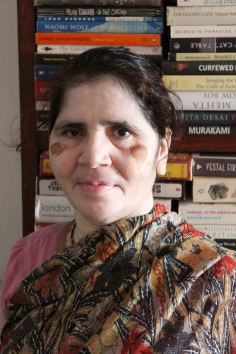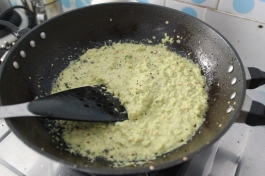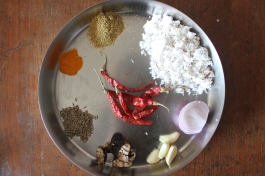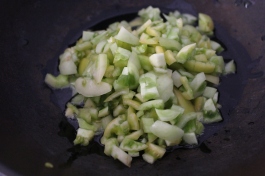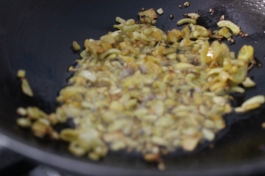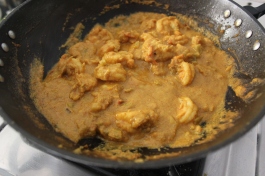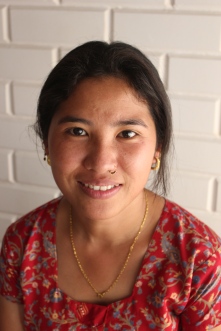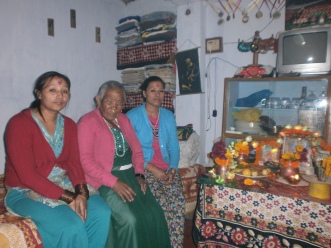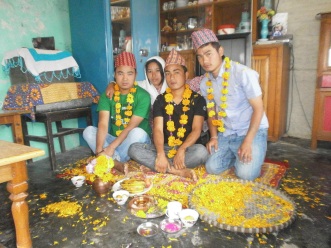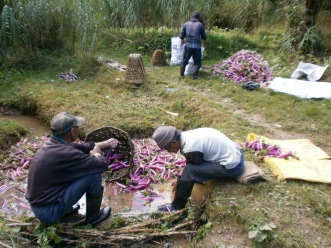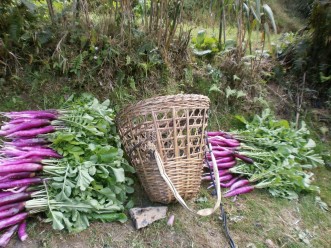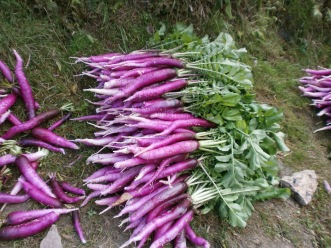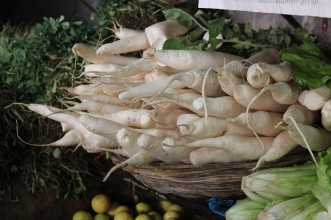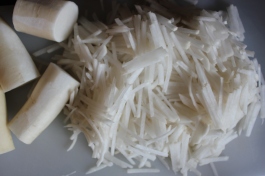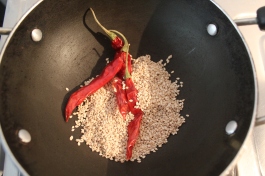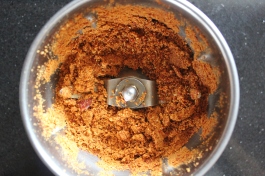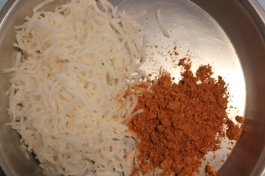Mumtaz or Asha didi, as she’s called by everyone, comes from Belgaum in Karnataka from a family of sari weavers. Her father couldn’t find work in the village and moved to Bombay to work in a cotton mill in Prabhadevi. Asha didi grew up both in Bombay and then for awhile in the village. She fell in love with a Tamilian Muslim electrician, Mohammad, at the age of 15 and got married and has 4 daughters. Asha didi cleans our apartment and her youngest daughter helps with the cooking.
Her mother died when she was very young and she was brought up by her aunt who is a really good cook. These 2 recipes using green tomatoes were taught by her.
Green Tomatoes
Green Tomato Chutney with Sesame Seeds and Peanuts
Ingredients
250 grammes green tomatoes
2 dry red chiliies
2 tablespoons sesame seeds
1/2 a cup peanuts
1 teaspoon mustard seeds
10 curry leaves
1 tablespoon oil
salt
Method
Heat the oil in wok and stir fry the whole tomatoes till they’re a little brown Remove. Roughly chop the tomatoes
Add the red chillies, sesame seeds and peanuts to the oil and stir till they start going a bit brown. Turn off the heat.
Cool and then put in a blender with the tomatoes. Add salt
Put a tablespoon of oil in the wok and fry mustard seeds and curry leaves Add tomatoes paste to wok and cook for about 3-5 minutes till the extra liquid dries up
Eat with rice, dal and maybe some fried fish. Happiness….
And then delicious prawns with coastal flavours …
Prawns cooked with Green Tomatoes
Ingredients
250 grammes green tomatoes
1/2 a kilogramme peeled and washed, small to medium sized prawns
oil
salt
fresh coriander to sprinkle
Method
Grind together –
4 dry red chillies
1 teaspoon turmeric
½ an onion
1 teaspoon cumin
4 cloves of garlic
1 tablespoon coriander seeds or 1 tablespoon coriander powder
small handful of tamarind or 1 tablespoon tamarind paste
1 cup grated coconut
Method
Chop the tomatoes into small quarters. Heat oil and cook the tomatoes till they’re reddish brown. Remove from the wok.
Add the ground spices to the oil with salt and cook for about 10 minutes till the oil separates. Add the tomatoes and cook for about 2-3 minutes on a medium flame.
Add the prawns and cook for 2-3 till the prawns are cooked.
Serve sprinkled with fresh coriander leaves and eat with rice, roti, neer dosa or appam.

